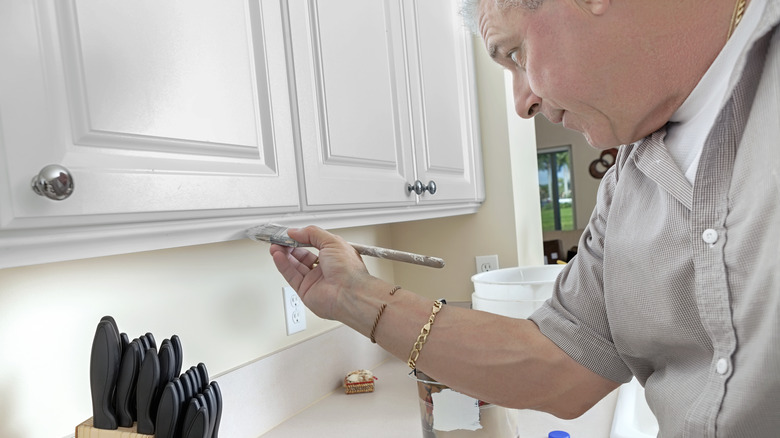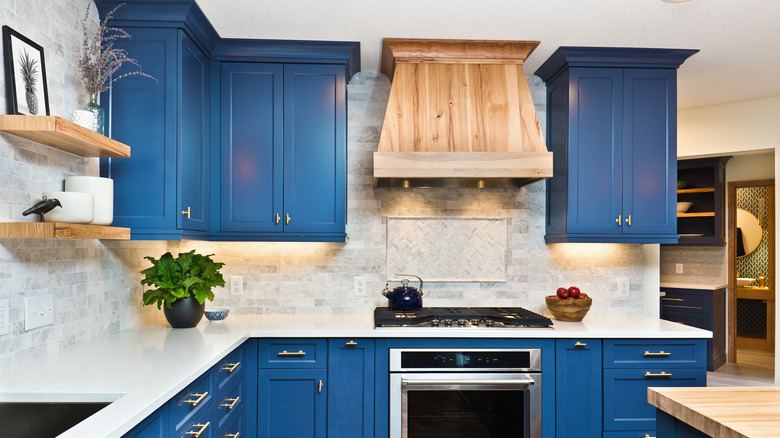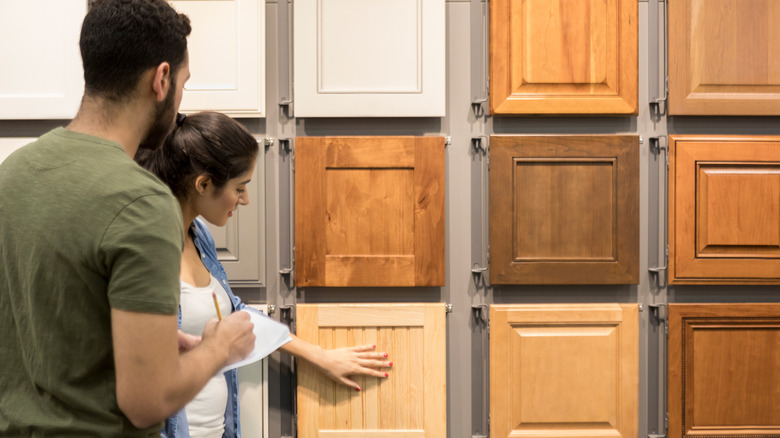The Hidden Downside To Refacing Kitchen Cabinetry
If you're thinking of giving your outdated kitchen a facelift, chances are you've faced the great replacing vs refacing debate. While a full-blown replacement will help you customize your cooking space, the high costs, demolition of the room, and the time required might throw your renovation budget in disarray. On the other hand, refacing will give your cabinets a new look without burning a hole in your pocket — or so you think. This cabinetry design scheme has its fair share of hidden downsides, like being a temporary solution.
Granted, refacing seems like an excellent option on paper since it promises to deliver everything you want at a fraction of the cost, takes less time, and is eco-friendly. But refacing your kitchen cabinetry simply includes installing new drawer fronts and cabinet doors, veneering or finishing the current surface, and replacing the existing hardware like hinges and knobs. Essentially, the visible sections of your cabinets and drawers get replaced or refinished, but the skeleton — layout and structure — would remain the same. So, you must be familiar with the hidden downsides of refacing kitchen cabinetry before you choose this option.
Durability is a major issue
As mentioned, the primary downside of refacing kitchen cabinets is their durability. Since you won't be replacing existing cabinet or drawer structures and merely changing the visible parts — meaning the damaged or worn-out frames and interiors would stay intact — it stands to reason that it would be less durable than a complete replacement. Simply put, refacing cabinets is a good option if you plan to put your house on the market soon and are thus touching up your kitchen to ensure it meets the current standards. However, if you plan on living in the house for long, this would be akin to slapping a band-aid on a deep gash.
Another significant disadvantage is that your kitchen would essentially look the same. The cabinets and drawers would look new, but the overall space would be the same. You won't be able to fix any underlying issues like uneven subfloors that might be impacting your cabinets or improve the functionality of the cooking space. So, refacing won't be an ideal solution if you want to open up the room to let more light in or move some things around to capitalize on the limited real estate. Moreover, your choices will be limited regarding veneers or hardware, as you can only choose ones compatible with the original structure.
Hidden costs can put a dent in your budget
Often touted as the more budget-friendly distant relative of complete kitchen replacement, the hidden costs associated with refacing will put a significant dent in your coffers. For starters, this project isn't DIY-friendly, so you'd have to shell out money to hire professional contractors. Plus, if you've got a lot of drawers and cabinets in your kitchen, the labor costs will put a strain on your budget. Add in the material costs for the veneers, cabinet and drawer fronts, and the hardware, and the cost to reface cabinetry will shoot up astronomically.
Not to forget that your cabinets and drawers must be in good shape. For instance, if their structural integrity is compromised — i.e., their frames are damaged or the cabinet and drawer interiors are too flimsy (or old) to be updated — you'll have to get them replaced instead. In case you decide to move forward with refacing despite the poor condition of your cabinets, the process might damage their surface further, increasing the costs even more.


